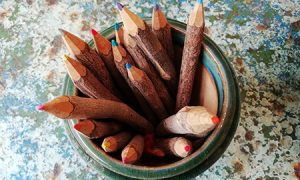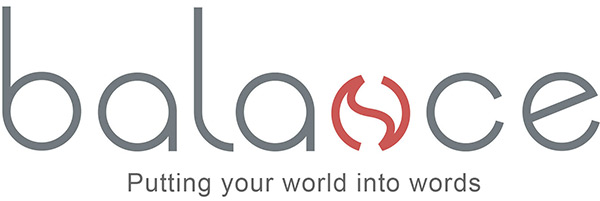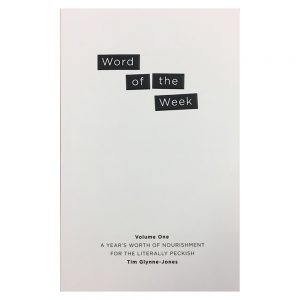
Do you ever look at your pencil and wonder, “How on Earth were you made?” Perhaps you don’t have a pencil, but that’s unlikely, given that there are 14 billion made every year. That’s two pencils for everyone in the world – and that’s not counting the pencils still in action from previous years.
So let’s assume you have a pencil.
Because it’s not electronic and there are no moving parts, it’s easy to take the pencil for granted as a rudimentary and unremarkable tool, like a spoon, say, or Donald Trump. But, in fact, the pencil as we know it today is the result of centuries of technological rivalry that makes Microsoft v Apple look like a momentary playground skirmish. We’re talking about a period of international competition that connects Napoleon, Alexander Fleming, a camel, a small corner of Cumbria, British industrial might and the male genitalia.
I’ll explain.
There is something remarkable, you have to agree, about the way they get the ‘lead’ inside the wooden outer casing. It’s the stationery equivalent of the ship in the bottle. Do they bore out the wood and pour in the core in liquid form, then harden it off somehow? Do they make long cylinders of graphite and thread them through the precision drilled wood? The more you look at it, the more you realise what a technological marvel the pencil is. The pen may be mightier than the sword but as a solution to the problem of putting meaningful marks on paper, the pencil knocks its archaic, inky counterpart into a cocked hat.
There’s a popular myth that NASA invested a fortune developing a pen that could work in zero gravity; meanwhile, the Soviets just gave their cosmonauts pencils. Problem solved. It’s apocryphal, but it does highlight some of the advantages of the pencil. It doesn’t rely on gravity, it doesn’t run out so fast, it doesn’t cost as much to make, plus you can rub it out.
You do have to sharpen it, though, and all that graphite and wood shavings can pose a hazard in a spaceship. During WWII, amid all the food rationing and melting down of railings to make tanks, Britain banned the use of rotating pencil sharpeners because of the amount of wood and graphite that was wasted. Knives alone kept the nation’s pencils sharp.
It must have felt like a return to the good old days between 1564 and 1795, when Britain dominated the pencil making world. It all began with the discovery of a large deposit of pure graphite in Borrowdale, Cumbria. They didn’t know it was graphite because the word hadn’t been invented then, so they called it ‘plumbago’, because it looked and acted like lead and it gave you a bad back carrying a sack of it to school.
Despite what your teachers may have told you in order to get you over that Freudian nipple fixation, you can’t get lead poisoning by sucking the ‘lead’ of your pencil. If anyone did ever go mad from sucking their pencil, the more likely culprit would have been the lead paint they used to lacquer them. They’ve stopped that now.
While the rest of the world was trying to figure out ways to create a writing implement using inferior powdered graphite, the Brits carved their Borrowdale bounty into neat ‘leads’, slotted them into grooved lengths of wood and cleaned up in the pencil market for the best part of 250 years.
They called them ‘pencils’ because they did the job of a small artist’s brush, made with camel hair, which was already going by that name. The word had evolved from the Latin ‘penicillus’ (little tail), which itself was a diminutive form of ‘penis’ (tail). This might explain the phallic euphemism ‘to put lead in your pencil’. Either way, bear it in mind next time you feel driven to snap your pencil in half!
Microbiologists among you will also have spotted that ‘penicillus’ looks uncannily like ‘penicillin’ and, indeed, this was the same basis upon which Fleming named his antibiotic. He saw the mould cells through his microscope and thought they looked like willies. Or something.
During the Napoleonic War, Britain blunted the might of the French army by cutting off the supply of pencils. We still had a global monopoly, despite the Germans coming close to cracking the powdered graphite alchemy by mixing it with sulphur and antimony. They didn’t manage to make a pencil but they did succeed in conjuring up the Devil, so the experiment was shelved on health and safety grounds.
Napoleon responded to the pencil blockade by instructing a scientist in his army, Nicholas Jacques Conte, to try the powdered graphite approach. Conte succeeded, using clay as his binding material and hardening the mixture in a kiln. More clay in the mix gave a softer pencil, less clay a harder one.
The Conte method blew the pencil making world wide open. Graphite (as it had been named by now, from the Greek ‘graphein’ – to write) could now be manufactured just about anywhere and the hard-soft clay-graphite variable acquired its own scale, with H denoting hard and B denoting black, or soft. HB became the popular middle ground. The question was, how to get it inside the wooden bit without waiting ages for some low-paid minion with a steady hand to feed the stuff in with a toothpick, one pencil at a time.
The solution was quite simple. Slat of wood, grooves cut, ‘leads’ laid in the grooves, glue applied, second slat stuck on top, glue dried, slat sandwich cut into individual pencils.
That’s right, your pencil is made by gluing the two halves together. And now you’re looking for the join.


